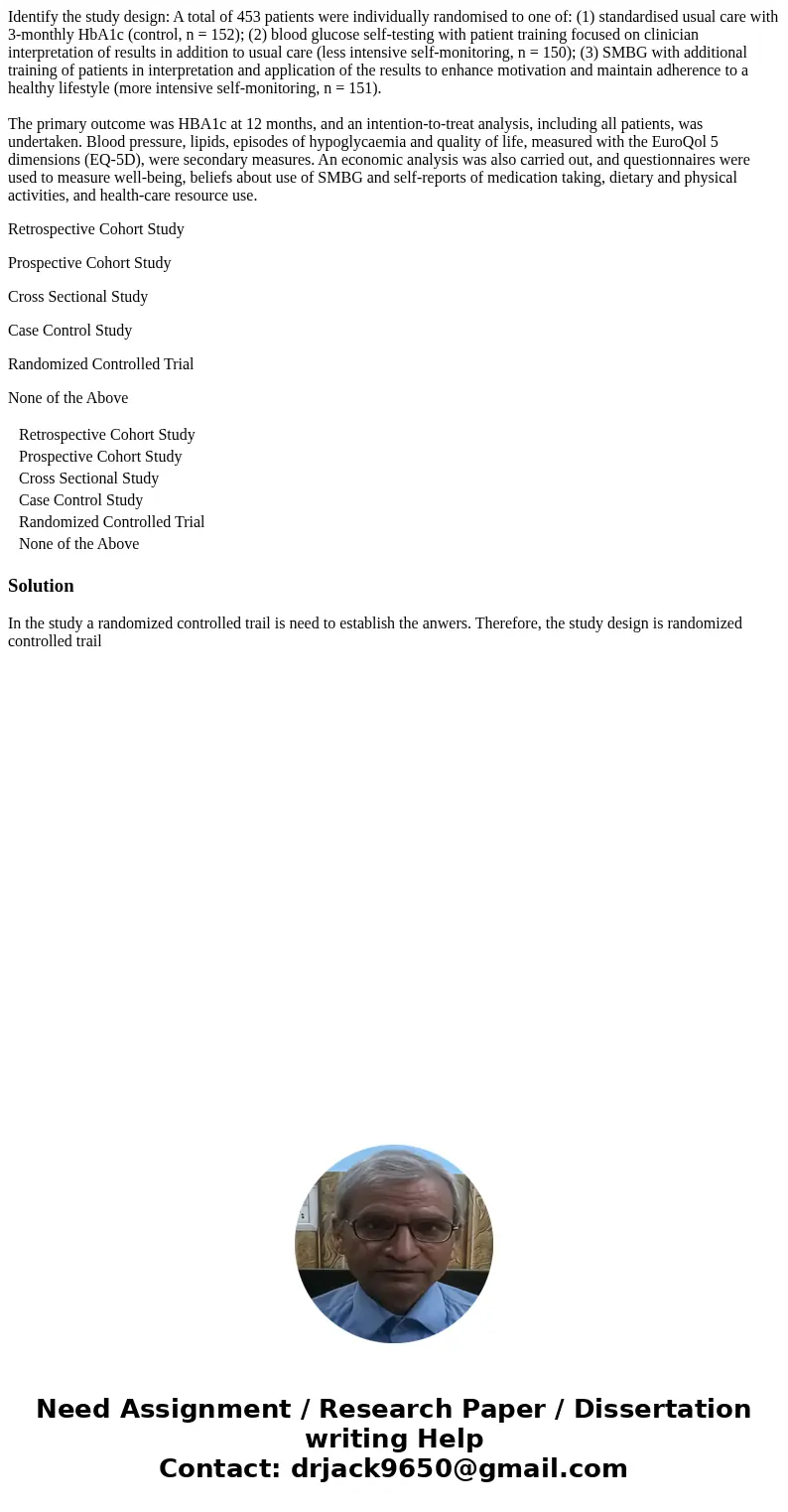Identify the study design A total of 453 patients were indiv
Identify the study design: A total of 453 patients were individually randomised to one of: (1) standardised usual care with 3-monthly HbA1c (control, n = 152); (2) blood glucose self-testing with patient training focused on clinician interpretation of results in addition to usual care (less intensive self-monitoring, n = 150); (3) SMBG with additional training of patients in interpretation and application of the results to enhance motivation and maintain adherence to a healthy lifestyle (more intensive self-monitoring, n = 151).
The primary outcome was HBA1c at 12 months, and an intention-to-treat analysis, including all patients, was undertaken. Blood pressure, lipids, episodes of hypoglycaemia and quality of life, measured with the EuroQol 5 dimensions (EQ-5D), were secondary measures. An economic analysis was also carried out, and questionnaires were used to measure well-being, beliefs about use of SMBG and self-reports of medication taking, dietary and physical activities, and health-care resource use.
Retrospective Cohort Study
Prospective Cohort Study
Cross Sectional Study
Case Control Study
Randomized Controlled Trial
None of the Above
| Retrospective Cohort Study | ||
| Prospective Cohort Study | ||
| Cross Sectional Study | ||
| Case Control Study | ||
| Randomized Controlled Trial | ||
| None of the Above |
Solution
In the study a randomized controlled trail is need to establish the anwers. Therefore, the study design is randomized controlled trail

 Homework Sourse
Homework Sourse